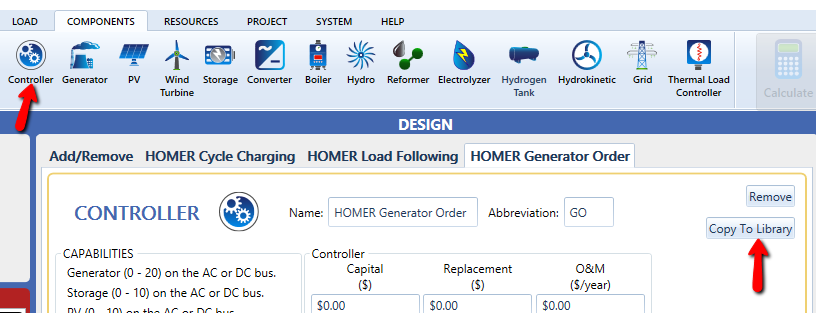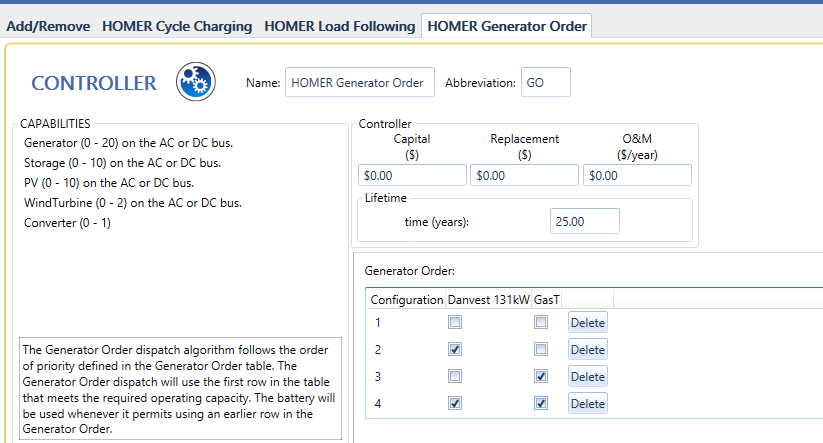Microgrid control strategies are at the heart of successful microgrid design and optimization. Now HOMER Pro truly puts the concept of “control” into microgrid control strategies. Version 3.7, released in August 2016, introduced three new ways for users to supplement or replace the default load following and cycle charging strategies HOMER has used for decades.
Moving HOMER to an Open Platform to Meet Modern Challenges
“HOMER was originally created in 1993, when microgrids were limited to remote off-grid areas, and the equipment and controls were rudimentary and commercially immature,” says HOMER Energy Chief Executive Officer Dr. Peter Lilienthal. “For the last 23 years, HOMER’s original control algorithms have been designing the most robust and cost-effective solutions for the widest variety of applications. But with new control and storage technologies coming out every day, we needed a way to give our partners more flexibility to put their market-ready products and control algorithms directly into HOMER.”
HOMER Pro 3.7, released this month, introduces three exciting new possibilities for using microgrid control strategies in HOMER. These new options include two Applications Programming Interfaces (APIs) that allow users to create their own dispatch algorithms, a new microgrid control strategy dispatch algorithm, and a new controller component that makes it all work.
We hear things like this a lot:
“HOMER is fantastic! But I sure wish it could…”
“We evaluated HOMER and found it to be a powerful tool, but our [battery, microgrid controller, or other component] doesn’t work exactly that way…”
HOMER© Pro cannot be all things to all the microgrid world. Adding infinite complexity to the core product defeats the purpose of creating an agnostic tool for determining least cost options for microgrids. With the new API options, however, advanced users can use HOMER Pro as an R&D tool, exploring possibility and understanding its impact on microgrid cost and function. Companies with proprietary strategies can place their controllers into HOMER without revealing any sensitive intellectual property.
These new open platforms build upon HOMER’s position as the global leader for microgrid optimization and early-stage design. They give users a range of microgrid control strategies from “no decision needed – let HOMER do it,” to complete control through a Software Development Kit. Early testers of the software say these are the most exciting upgrade HOMER has ever had. We are targeting users from students researching microgrid control and storage approaches to Fortune 50 companies developing their own controls and equipment for integration into microgrids.
The Heart of Microgrid Control Strategies: The HOMER Pro Controller Component
 The basis for all three new dispatch control options is a new Controller Component, which replaces the current System Control page in HOMER Pro. HOMER Pro users can save their versions to their personal library and use them again and again. This saves all the cost configurations and any non-default settings for the controller.
The basis for all three new dispatch control options is a new Controller Component, which replaces the current System Control page in HOMER Pro. HOMER Pro users can save their versions to their personal library and use them again and again. This saves all the cost configurations and any non-default settings for the controller.
Now let’s take a look at how HOMER users can control dispatch using this new component, from the simplest to the most powerful approach.
Generator Order (GO) Dispatch
The Generator Order (GO) Dispatch algorithm allows HOMER users to select explicitly the order in which generators will be used. HOMER’s default dispatch algorithms (load following and cycle charging) are based on a merit-order approach, in which the lowest cost means of reliably meeting the electric load is chosen. GO Dispatch can be used to override that option when there is a business or design reason to do so. GO Dispatch allows users to specify up to 20 combinations of generators.

The HOMER Generator Order dispatch lets users enter a combination of generators and the order in which to use them. In this example, the first choice is no generator, the second choice is Generator #1 (on the left), the third choice is Generator #2 (on the right), and the final choice is turning both on. Up to 20 combinations of generators can be specified. The battery will always be used if doing so permits an earlier row in the order.
GO Dispatch is part of the base product and will be available to all HOMER Pro licensees.
MATLAB Link Microgrid Control
MATLAB Link is a new HOMER Pro module that provides users an open API to create and run their own control and dispatch algorithms. MATLAB is a standard for rapid engineering algorithm development. HOMER users who work with MATLAB can create their own control algorithms and then run them in HOMER. The HOMER Energy Engineering Team has demonstrated that MATLAB Link allows for extremely rapid prototyping and testing of control strategies.
MATLAB Link is available as an inexpensive add on to the base HOMER Pro product. It is included in student versions at no additional cost.
MATLAB Link is meant for R&D, not production mode. When a controller is ready for release and inclusion in public versions of HOMER, or for internal company usage on a production scale (for example for the sales team to use to prepare proposals), a more robust solution is required. That’s where the ultimate open option comes in – the Software Development Kit.
HOMER Pro Software Development Kit

The final option for user control of dispatch in HOMER Pro is the Software Development Kit (SDK). The SDK allows HOMER users to write their control algorithms in C++, compile them into dynamic linking libraries (DLLs), and include them as a user-selectable controller for their microgrid. The SDK protects any proprietary IP. Neither HOMER Energy nor the end user have access to the microgrid controller source code. SDK components can be used either internally, for R&D purposes, or included in a public version of HOMER.
The SDK is an enterprise solution. Companies interested in this option should contact the HOMER Energy Sales Department for more information.
Both API solutions, MATLAB Link and the HOMER SDK, are available for modeling dispatch controls in HOMER Pro 3.7. Storage versions of both API solutions will be released in version 3.8, due out in October, 2016. All three new dispatch options are limited to off-grid applications in the first release. Grid will be added to both storage and control solutions in HOMER Pro 3.8.
How to Get the New Control and Storage Options
HOMER Pro 3.7 can be downloaded from https://users.homerenergy.com/pages/homer_pro.

Great! Looking in to this innovative version I am eager to use HOMER PRO
Nice to hear. This will attract more Micro grid consultants who needs to have their user defined Dispatch strategy. Homer will be more effective and interactive with these updates
Great! You are filling the gap in the Homer. The advanced control system in microgrid was missing.
I am a PhD of power system and would be glad to collaborate in software development.
I think HOMER Pro is more impressive and powerful with this Innovative Version.
The Controller Component is the Great Evidence of the HOMER Pro Microgrid Optimization Tool as Global Leader.